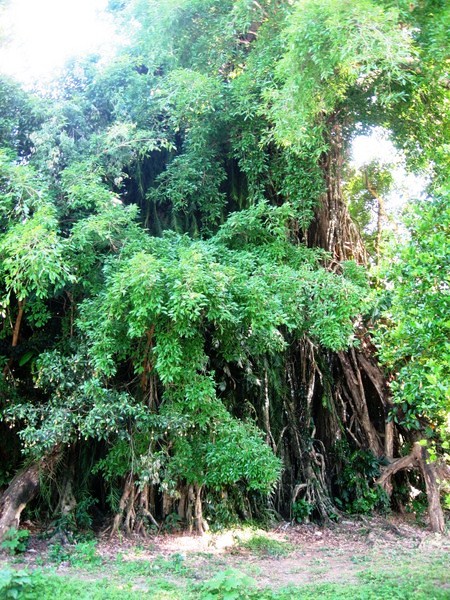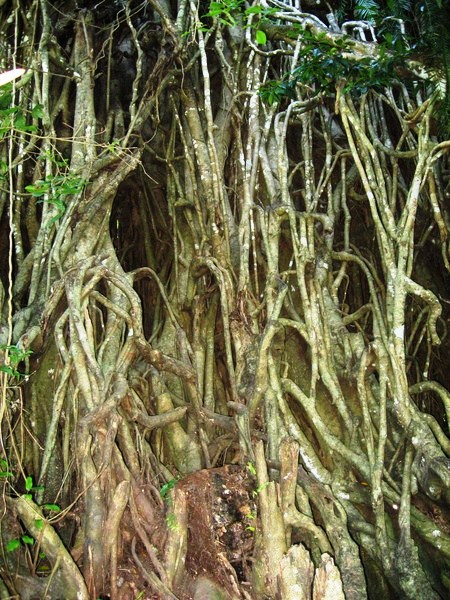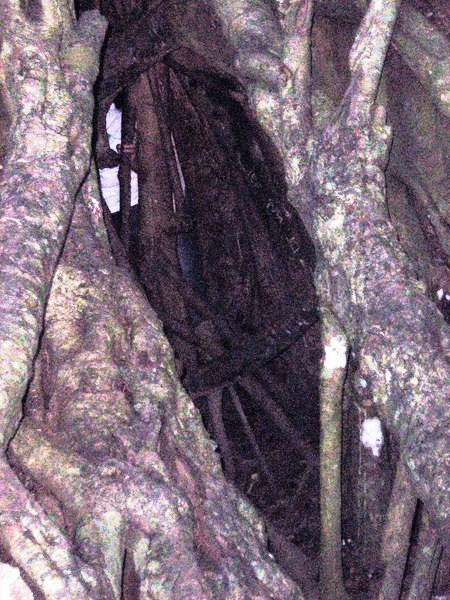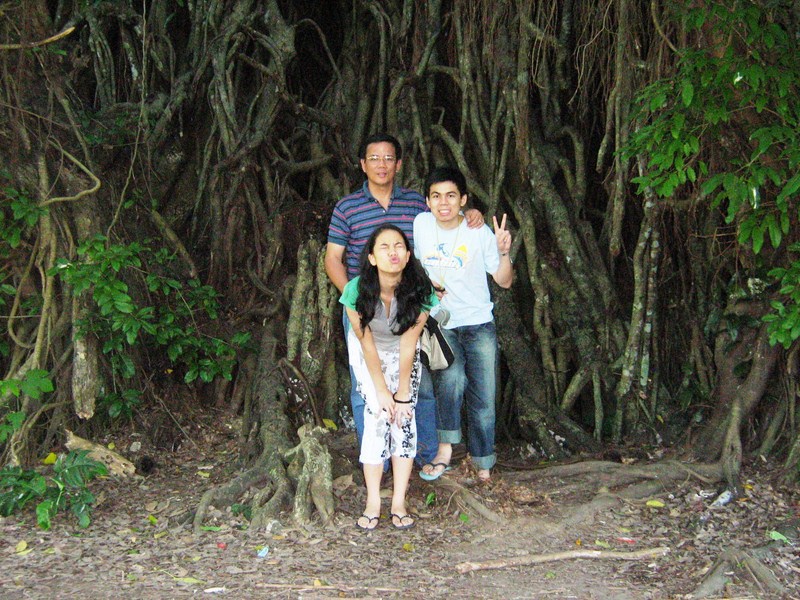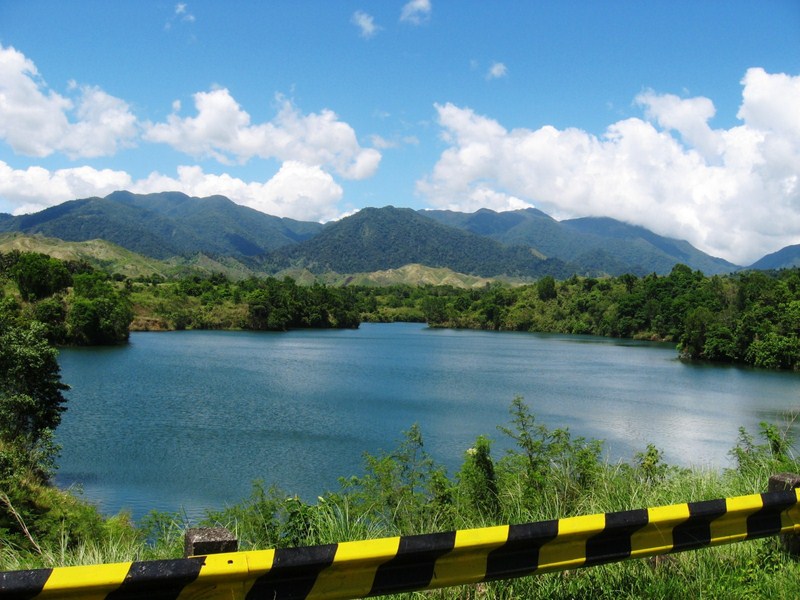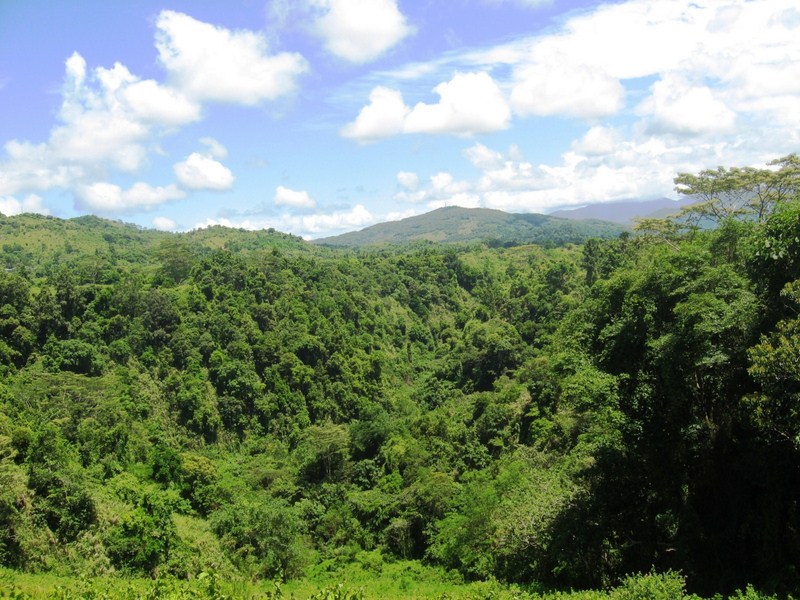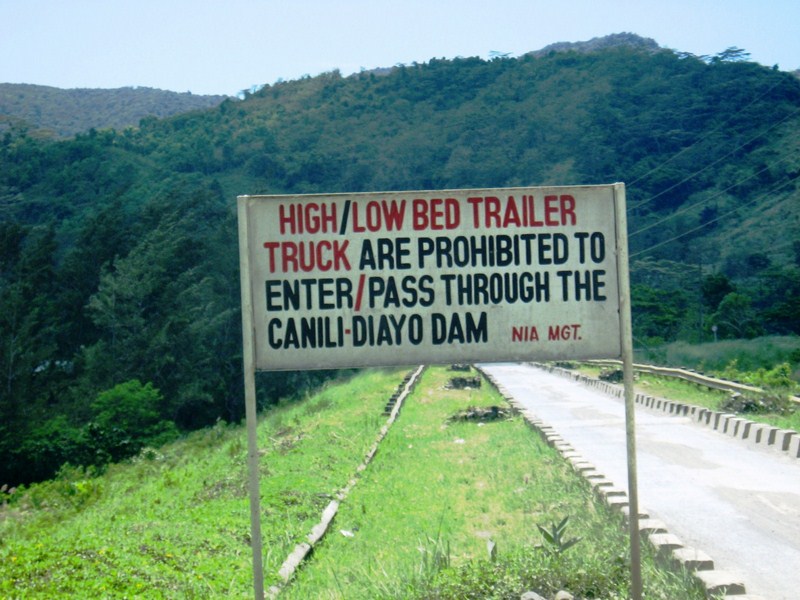After lunch, the Sen. Angara invited us to explore the compound and climb the hill. We were particularly impressed by and enjoyed exploring the compound’s Ifugao Village, a mini-complex of quaint Ifugao-inspired cottages.
| View of Dicasalarin Cove from Lighthouse Hill |
Then, with some guides, we decided to explored the cove itself, its stunning beauty as rough as the continually crashing waves of the Pacific Ocean. Its beauty remains so as there are no resorts and visitor facilities along the beach. Instead, scattered along this cove are unique rock formations, each with a unique charm of its own.
| Unique rock formations at Dicasalarin Cove |
| Exploring the cove |
On the right side of a peninsula we discovered a sea-sculpted cave and did some swimming inside. This short cave, seemingly accessible only during low tide, is well-lighted as it is open on both sides of the mountain.
| Exploring the sea-sculpted cave |
Nearby is Birhen Island, a rock formation sculpted by natural erosion to resemble the figure of the Blessed Virgin praying amidst the pounding waves. On our way back, we then climbed a steep imposing hill, the site of the senator’s future lighthouse.
| The route up Lighthouse Hill |
| The gang’s all here |
Steps, with ropes tied to wood posts as railings, were cut along the hill to provide access. The 15-20 min. climb was exhausting but the rewards were great when we reached top as we had a panoramic and breathtaking, 360 degree view of the cove, the Sierra Madre Mountains, sheer cliffs and the pounding waves of the Pacific Ocean. The way way down was easier but harder on the heels. Back on the beach, we gave our tired bodies a break with a brief but welcome frolic at the sea.
| Relaxing along the beach after a tiring trek |
Returning to the resthouse, we met up with Ms. Alexandra “Alex” Angara, the London-educated daughter of the senator, and her boyfriend Joseph “Joe” Cole and her pet dog Huckleberry. Alex invited us to stay the night and we were really tempted to accept the offer.
 |
| With Alex Angara (third from left) |
However, we only planned our visit as a day trip and didn’t bring enough clothes. Besides, we had to leave very early in the morning for our long-haul return trip to Manila. Thus, it was with some difficulty that we declined the invitation.
.jpg) |
| The beauty that is Dicasalarin Cove |
After washing up, Alex graciously accompanied us to the beach where our speedboat was waiting to bring us back to Cemento. Truly, our visit to Dicasalarin Cove was the piece de resistance to our 4-day visit to the beautiful province of Aurora.


.jpg)
.jpg)
.jpg)


